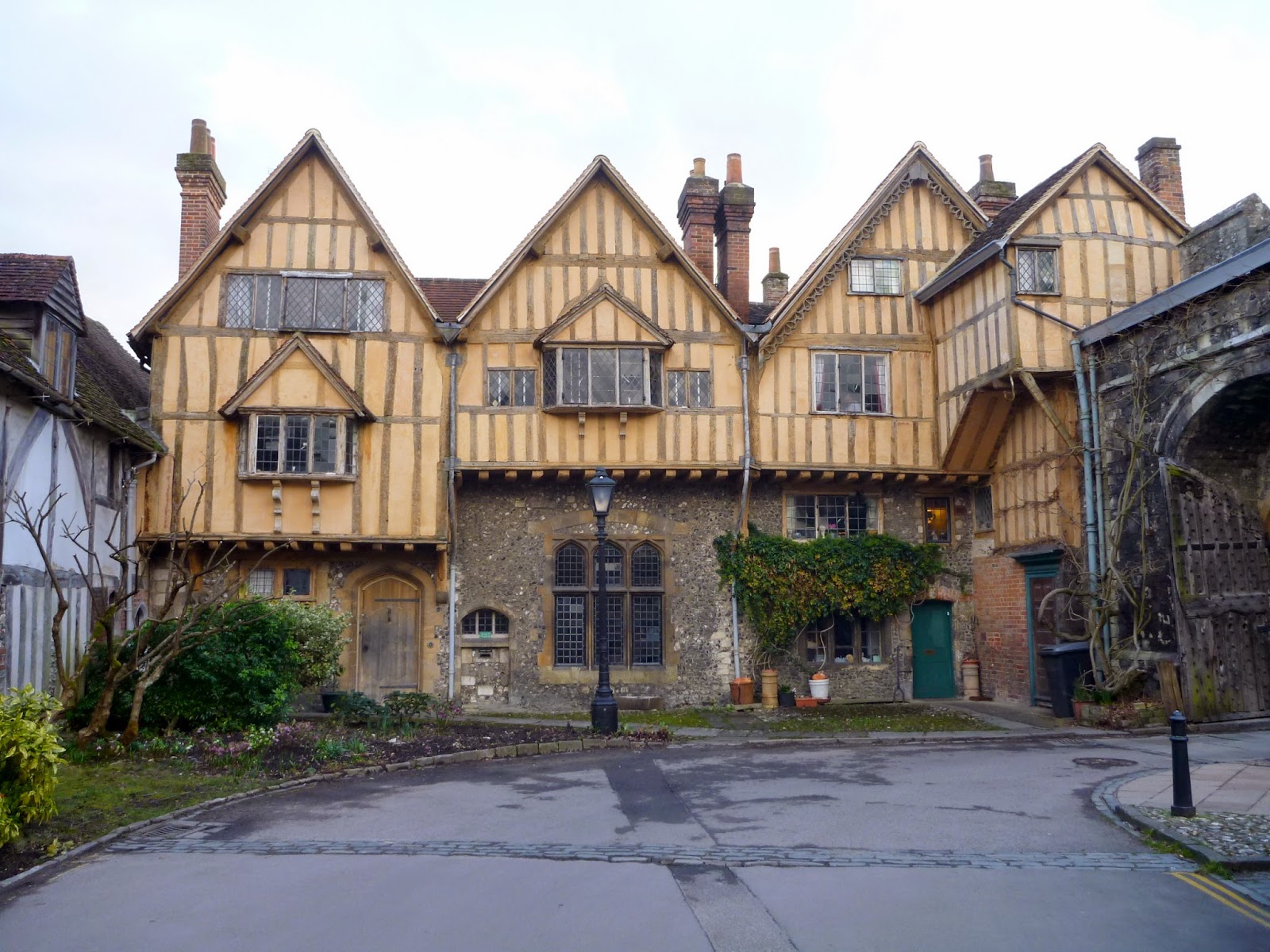Winchester Cathedral.
One of the largest cathedrals in England, with the longest nave and greatest overall length of any Gothic cathedral in Europe, Winchester Cathedral was founded in 642 on a site immediately to the north of the present one. This building became known as the Old Minster and it became part of a monastic settlement in 971.
In 1079 work began on a completely new cathedral. A substantial amount of the fabric of the old building, including the crypt, transepts and the basic structure of the nave, survives. Numerous additions and restoration have been carried out since.
It's a very imposing and impressive building
The font dates from the 12th century, made of black marble and is decorated with carvings showing the miracles of St Nicholas, patron saint of children.
It's a magnificent place
The stained glass windows are particularly spectacular
The choir stalls are 14th century and this is where the priory monks once sang their daily offices. Carved in oak the stalls are richly decorated with human figures, tiny heads and carved animals surrounded by curling leaves, thought to be the work of a Norfolk master carpenter, William of Lyngwode.
The 15th century Great Screen is behind the high altar. The original painted statues that once adorned its carved niches are gone, destroyed during the Reformation.
looking closer
There are seven chantry chapels which were added between the 14th and 16th centuries.
detail
Waterlogged foundations (the crypt still floods on a regular basis) on the south and east walls were reinforced by diver William Walker, packing the foundations with more than 25,000 bags of concrete, 115,000 concrete blocks and 900,000 bricks. Walker worked six hours a day from 1906 to 1912 in total darkness at depths up to 6 metres and is credited with saving the cathedral from total collapse.
A series of nine icons were installed between 1992 and 1996 in the retroquire screen. These icons, influenced by the Russian Orthodox tradition, were created by Sergei Fyodorov.
Pieta by Peter Ball
looking closer
These mainly 13th century tiles are the largest and oldest area of tiling to survive in England
The Winchester Bible, is the largest and finest of all surviving 12th century English bibles. A single scribe wrote out its text in Latin, while artists worked its exquisitely illuminated capital letters. Their glowing colours, including gold and lapis lazuli, are as intense today as 800 years ago.
Beautiful frescos on this vaulted ceiling
looking closer

The Epiphany chapel
Another Russian Orthodox icon in the Epiphany chapel this time
Four glorious stained glass windows, designed by Edward Byrne-Jones, made in Willliam Morris' workshop. The foliage decoration above and below each pictorial panel is unmistakably William Morris.
Jane Austen was buried in the cathedral
The Blue Cross, another piece of modern art.
By Peter Ball.
Outside, to the right of the cathedral's west front, are a series of impressive flying buttresses
which form a narrow pedestrian passage, Curle's Passage, which leads from the outer to the inner close. The archway created a new outdoor route between the two areas - before, pedestrians had to walk through the cathedral.
The inner close, where the Barbara Hepworth stands, is a peaceful place

with some beautiful houses

including Cheney Court an Elizabethan timber-framed building which once served as the courthouse.

Next to it, is this long timber-framed building which dates from 1479
and was once the priory's stable block.































I am very fond of Winchester cathedral. They have a long tradition of commissioning contemporary art. In the late 90s the craft guild I belonged to then had an exhibition where most of the old tiles are, just up from the entrance to the crypt and that wondrous Gormley. I volunteered to do the early morning vigil of the show, and so arrived there at 8am every day for two weeks. It was a glorious experience.
ReplyDeleteWe enjoyed our visit very much Olga, and were so impressed with the modern art there. We just missed by a few days a tapestry by Maggi Hambling - a pity about that.
DeleteGreat fun to have been able to organise an exhibition there, and have the chance to spend so much time in the cathedral.
Eirene, hello and I hope this finds you well.
ReplyDeleteI am the editor of Stonexus Magazine and I write to request permission to use your photo of the statue of William Walker the Winchester Diver for an article we will be doing in the next issue, We would be happy to credit you and send you a copy of the magazine when it id published next month. Check out the magazine at stonexusproductions.com. We also have a Facebook page.
Hoping to hear from you in the affirmative,
Tomas Lipps
p.s. I commend you on the 'show' of art you've curated here. I wish I could enlarge certain of these images
p.s. I feel obliged to point out that William Walker was only responsible for placing the 25,000 sacks of concrete (not that that wasn't a difficult task, accomplished as it was in cold murky water.) The bricks and blocks were laid by 'ordinary' masons after the trench that he had capped with the concrete was pumped dry.
Hello Thomas, and thank you for your comment. I am happy for you to use the photograph and any others you wish to use, as long as I am credited and copyright is credited to me. I look forward to seeing the next issue of the magazine, and would love to have a copy.
DeleteI would also like to thank you for your kind words - I was not very happy with some of the photographs as the light in the Cathedral worked against me at times, but I'm glad you liked them. And thanks about the information about William Walker and the involvement of other people in the project.
All the best, Eirene